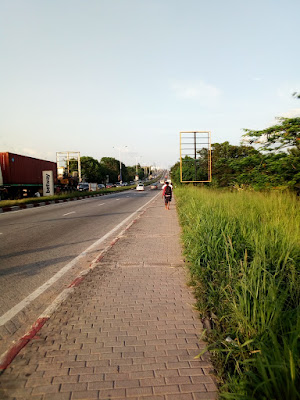 |
| Shot on Tecno Pop 1 Street in perspective |
Diverse tools and equipment in photography are now available to improve the quality of photos and even make it easier to take photos. A proper digital camera can be at times expensive to acquire but there is no need to worry since there are myriad of smart phones capable of helping everyone get nice shots. Referring to smartphone photography here, the focus is on how we are able to use the mobile devices at our reach to capture images to tell different stories to meet their respective purposes. Photography is also a form of art and such a creative field that has some elements of art in it and knowledge of these elements is a key step to enhancing the look of your photos regardless of the devices used.
In no particular order, here are some of the elements of art in Photography to be dealt with.
- Form
- Line
- Texture
- Pattern
- Shape
- Color
FORM - In simple terms of definition, photography is the process of capturing scenes on a light sensitive material by the exposure of the camera film to light within a period of time which is normally in seconds. Creation of 3-dimensionality in pictures is an ideal trick that makes a photograph look real and solid. It might sound a little strange getting this right with a smartphone but creative use of the smart phones will make it achievable. Ideally some of these phones now have improved features like aperture, shutter speed among others that make it in a way not too difficult to achieve.Shot on Tecno Pop 1 With this image, you can feel the snail as if real because the idea of getting the form right was considered.
LINE - A very significant element in photography that connects objects to move a viewer's attention towards the central point of focus. Look out for those kind of scenes when taking pictures in such a way that perspective is seen in the images and it will in turn enhance the composition.
Shot on Tecno Pop 1. Use of line element to create a movement in an image
TEXTURE- For a picture to tell a story and attract attention means that it has something that can be a bit strange or real that will sparkle a lot of questions in the mind of viewers. Every image that is put out there communicates a message but taking pictures that will send messages that are not ambiguous should be a great concern for the photographer.
PATTERN - When shapes and lines come together in some particular arrangements, a pattern is created which creates a feeling of creativity.
Do these to get the best pictures with your smartphone:
- Practice creating photography elements
For every picture a professional photographer will take, he definitely has a concept or idea behind it because he wants to achieve a distinct goal for a client's satisfaction. Without any concept in mind, photos will look anyhow despite the kind of camera and its accessories that will be made use of because a good picture should thrive on a concept. A few of these elements have been discussed with some examples so try them out and experience an outstanding difference in the look of the images you take with your smartphone. Now, it is not the complexity of a camera that defines the professionalism of a picture but all depends on the ideas in use by the photographer. Try creating a story with the images, thus let your images tell a story to the public in the sense that a viewer should look at the image and tell the reason why you took a picture in a particular way.
- Avoid overexposure and underexposure:
Overexposure is exposing the camera to too much light which creates a lot of highlights in an image that is sometimes obstructing the eye. It normally results when a camera's shutter speed is brought low, aperture wide, ISO increased or high in an environment much light. With smart phones like some simple ones there are not much settings like these so the environment must be well considered in terms of light availability. Taking time to observe pictures on social media, it is very explicit that some people never mind the look of their images and the kind of impressions created by these images. Some smart phones are not that much advanced in features relating to picture quality so the photographer has to be attentive to the environment in which a picture is to be taken to avoid overexposure or underexposure. |
| A). Correctly exposed image |
- Try editing your pictures:
In fact, one can easily access so many applications for picture editing even on smart phones so try them and give professional touches to your images. Cropping is one the things that make the focus of an image easily known since it helps to remove unnecessary parts of an image. You can try fixing the lighting, white balance, color, saturation among others you fill appropriate. The types of photography are just many from wildlife photography, street photography, product photography, food photography, architectural photography to macro photography and so many others.
The camera which is a device used for capturing exposed scenes, events etc on a light sensitive medium which is the sensor undergoes some processes before the final outcome which is the image is produced. Deep insight into how this process occurs informs anyone handling the camera to make informed decisions on how to adjust the camera settings to achieve a particular result. Here the focus device is a smartphone but all that will be dealt with is same principle with the camera.
Three major things are responsible for how a picture looks like and they are collectively referred to as the exposure triangle. The exposure triangle consists of :
- APERTURE- Aperture refers to the opening of the hole which allows light into the camera which is made such that inside it is no light. This hole that lets in the light is within a part of the camera called the lens. Every camera in distinct in how this opening called the aperture can be changed and it has ranges. For instance, f/2, f/4, f/8, f/16 and the sizes are in f/stops which defines it as a fractions of the focal length of a camera. The focal being the distance between the optical centre of the lens and the sensor.
A smaller f/stop or number means a larger aperture which means the subject captured is large enough with a kind of blurred background but a larger f/stop number means a smaller number. The aperture is responsible for what is termed the DEPTH OF FIELD.
2. SHUTTER SPEED- A camera has a structure or layer that covers the image sensor to prevent registering of an image until that is what is desired and this layer is termed the shutter. There are time ranges or settings available on digital cameras to determine how fast or slow the shutter should open or close and this is what is known as the shutter speed. For a fast moving object or subject, a fast shutter speed like 1/2000 or higher of a second is needed to freeze the subject before a good image is captured.
3.ISO- It defines how bright or exposed an image will be. We will get into the details of all these for in-depth understanding.
The analysis to be done in this article is based on images taken with a smartphone and this is to let every smartphone user be aware of how they can improve the images they take.
The type of image capturing device does not matter it is the person behind that matters
How true is this statement? The quality of camera a person holds is not what really impacts the quality of pictures taken but it is the knowledge and idea employed by the photographer that is of utmost concern.
Shot on TECNO POP 6 PRO
The picture above was shot on a smartphone TECNO POP 6Pro. From the image details displayed, the camera saved the image in jpg(a raster based image file format). It explains that this picture is made from pixels which are tiny squares that carry picture elements which help to digitize an image from the analog environment into the digital space as shown above. Now the major thing of focus here worth noting is the section labelled: TECNO BE8- breakdown. The icon displayed before this writing is the icon for APERTURE. Aperture setting f/2.0; shutter speed is 1/1391; ISO is 66. How did this settings impact the look of the image? Remember, the settings were not manually set but was automatically set by the camera due to limited settings because it is a smartphone.
Smaller aperture number means a larger opening and on this smartphone TECNO POP 6 Pro, the highest opening is the f/2.0 and this is the reason why the plant was captured large in view and the rest of the background appearing a little blurred out.
ISO66 means the brightness level of the camera or sensitivity of the sensor was very low which made the image to be light deficient. This settings could not be changed because the camera is limited in settings as it is not a professional camera but ones you understand all these technicalities, you are better informed to take good pictures.
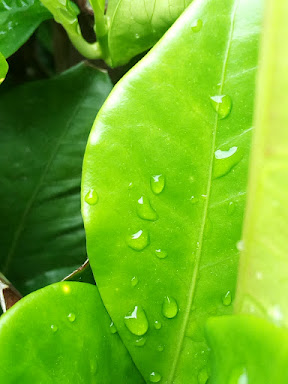








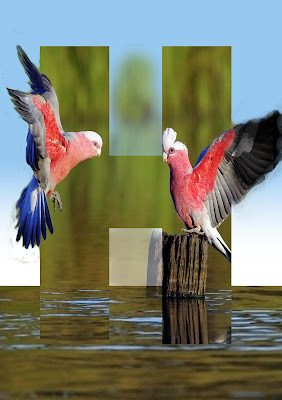

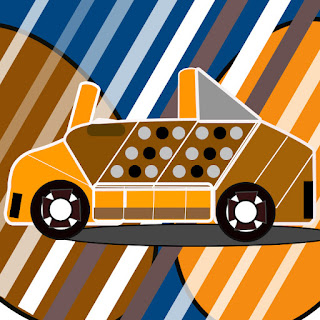


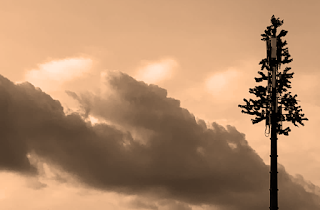

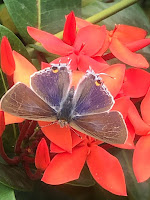

Comments
Post a Comment
Share your views on this insightful content